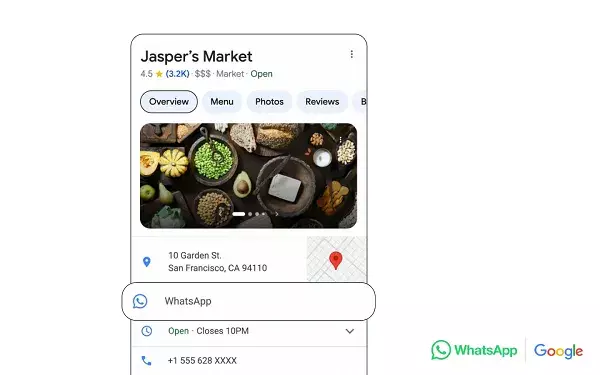In an era where instant communication dictates customer satisfaction and brand loyalty, Meta’s recent announcements signal a pivotal shift in business messaging strategies. As consumer preferences pivot toward direct, real-time engagement, Meta is positioning itself as a powerhouse to meet this demand with an array of innovative tools. These developments don’t just reflect technological progress; they embody a fundamental transformation in how businesses connect with their audiences, fostering deeper relationships and enhancing efficiency.
Historically, messaging platforms served as secondary communication channels, often overshadowed by traditional methods or even email. Now, they are at the forefront, with Meta capitalizing on this trend by integrating its messaging services more deeply into everyday digital experiences. From Google Search to e-commerce platforms, Meta’s enhancements are designed to streamline interactions, making it easier for consumers to reach brands without friction. This strategic focus signifies an understanding that convenience and immediacy are what today’s customers increasingly demand.
Seamless Integration: Bringing WhatsApp Closer to Customer Discovery
Meta’s move to bundle WhatsApp within Google Business Profiles signifies a crucial step toward unifying discovery and communication. By allowing brands to embed WhatsApp buttons directly into their Google listings, businesses can capitalize on high-intent moments when potential customers search for their products or services. This feature simplifies the journey, removing unnecessary steps and encouraging spontaneous conversations. It’s a game-changer because it leverages Google’s dominance in search environments while unlocking WhatsApp’s widespread user base.
Furthermore, the ability for users to open business links within WhatsApp itself eliminates the disruptive app-switching that has long hampered online interactions. This seamless experience not only benefits consumers but also offers businesses richer data on engagement, response timing, and interaction patterns. Such insights are invaluable for fine-tuning messaging strategies, personalizing outreach, and ultimately increasing conversion rates.
Adaptive Pricing and Enhanced Advertising Capabilities
Meta’s adjustment of its pricing model with new volume tiers demonstrates an understanding that diverse businesses face varying communication demands. By offering more flexible pricing options, Meta can accommodate small startups to large enterprises, fostering wider adoption of its messaging ecosystem. This flexibility encourages businesses to leverage WhatsApp and Messenger more aggressively, integrating these platforms into their marketing funnels.
Additionally, the evolution of Click to Message ads with new goal-oriented functionalities exemplifies a data-driven approach to advertising. Whether it’s optimizing for purchases, lead generation, or maximizing return on ad spend, Meta’s enhancements enable businesses to align their messaging goals with the right ad formats. The introduction of automatic-destination ads signifies a strategic move toward meeting customers where they prefer to communicate—be it WhatsApp, Messenger, or Instagram Direct—streamlining the customer journey and reducing barriers to engagement.
The Future of Business Messaging: From Utility to Personalization
Meta’s expanding features for WhatsApp Business tools, including simultaneous usage of multiple platforms and native order tracking, reflect an ambition to make messaging not only functional but also deeply integrated into the customer experience. The ability for businesses to send verification codes or order updates via WhatsApp signifies a move toward elevating transactional conversations beyond simple replies. These enhancements foster trust and transparency, reinforcing customer confidence.
For Messenger, new calling features—such as AI call summaries and transcription—highlight an emphasis on capturing conversational data for more informed follow-up. This indicates a strategic commitment to not only facilitate live interactions but also leverage artificial intelligence to analyze and improve communication outcomes systematically.
Although these features are not yet universally available, their rollout hints at a future where business messaging becomes increasingly sophisticated, personalized, and integral to the overall customer journey. Meta’s vision appears to favor a landscape where brands don’t just speak to customers but actively engage in meaningful, context-rich dialogues that foster loyalty.
Critical Reflection: A Double-Edged Sword
While these innovations offer remarkable opportunities for businesses, a critical perspective reveals potential pitfalls. The push toward integrated messaging platforms could lead to customer fatigue, where consumers feel overwhelmed by constant outreach. Moreover, privacy concerns loom large; the blending of transactional data with messaging platforms raises questions about data security and consent.
Businesses must navigate this landscape cautiously, respecting customers’ boundaries while harnessing these tools for genuine engagement. Over-automation or intrusive messaging, even if well-intentioned, risks alienating audiences rather than cultivating loyalty. The challenge lies in balancing technological possibilities with authentic, respectful communication.
Overall, Meta’s enhancements represent a powerful leap forward in business communication, capable of redefining customer-brand interactions if wielded thoughtfully. The potential for richer, more accessible conversations is enormous; yet, it demands a strategic, ethical approach that prioritizes customer trust over mere technological prowess.


Leave a Reply